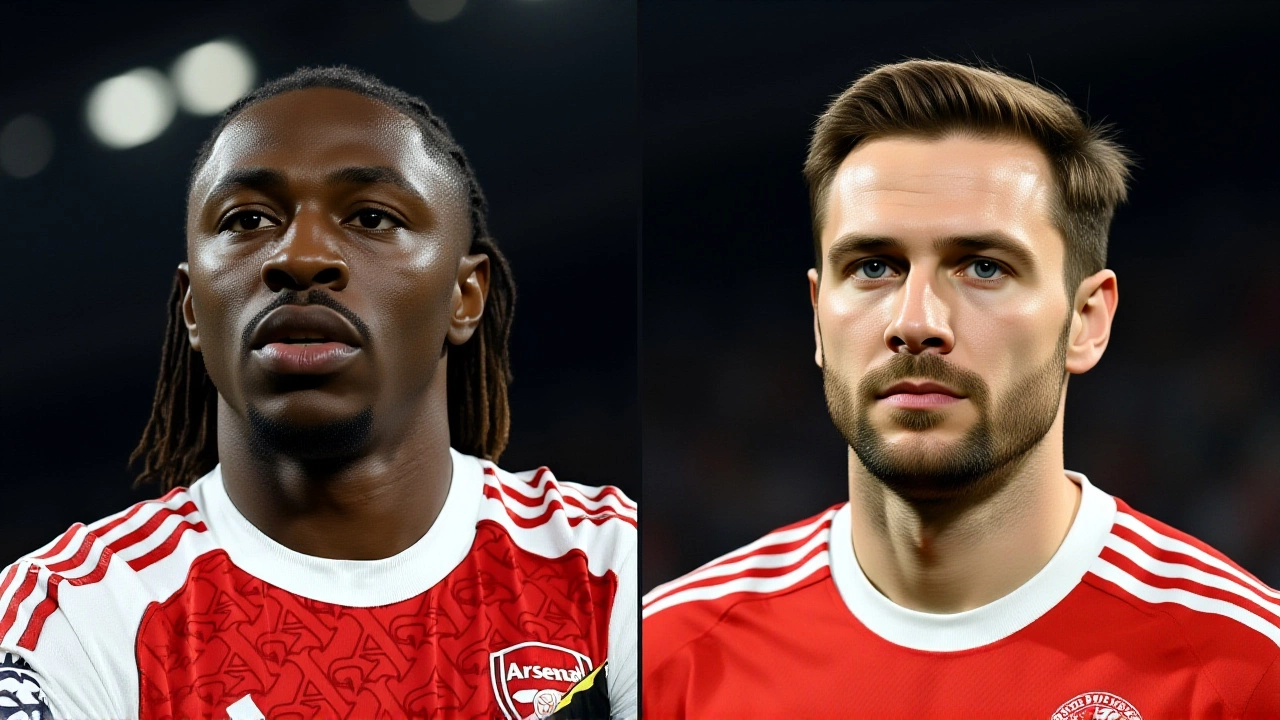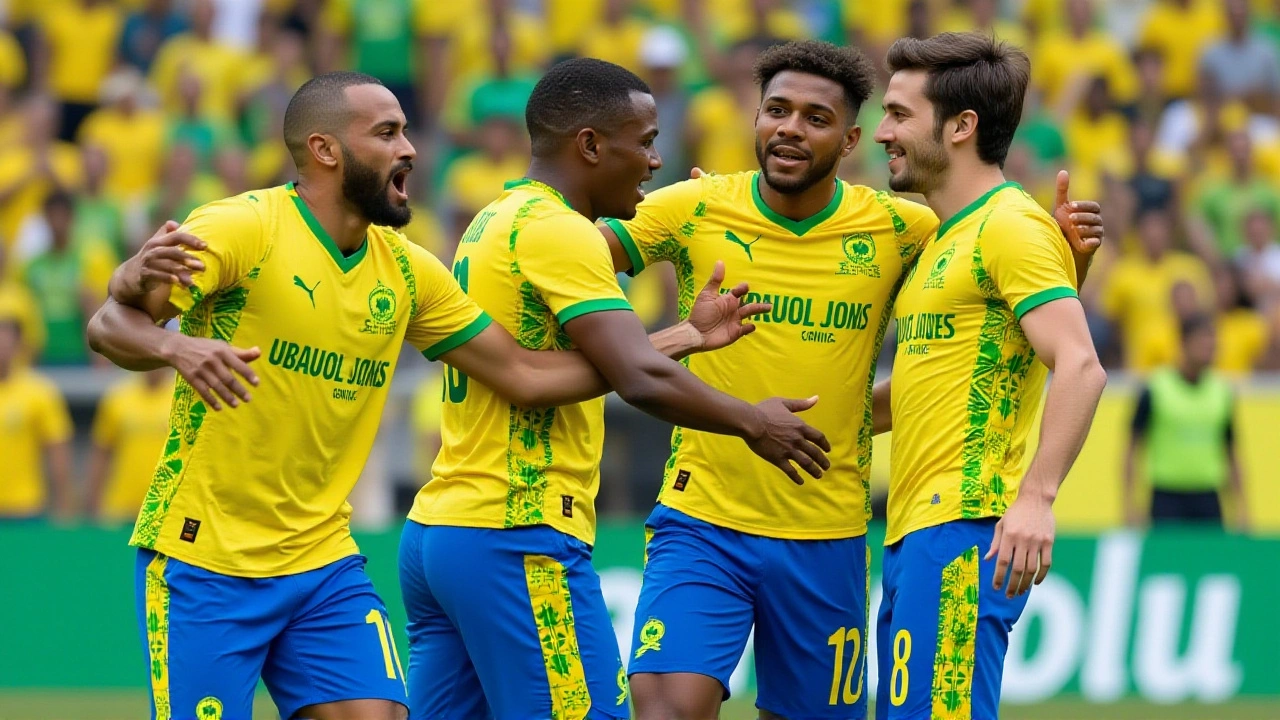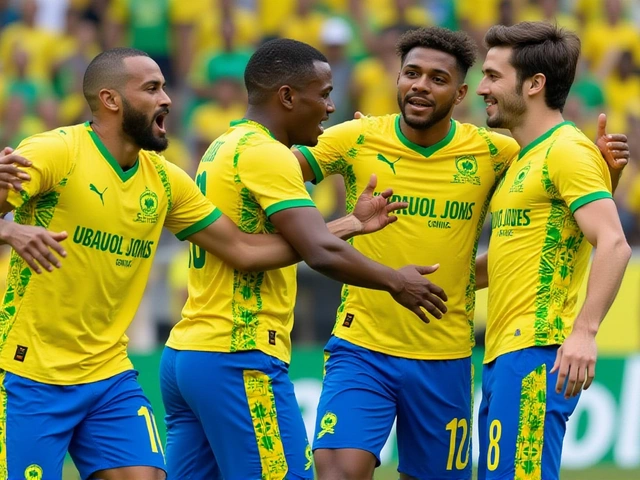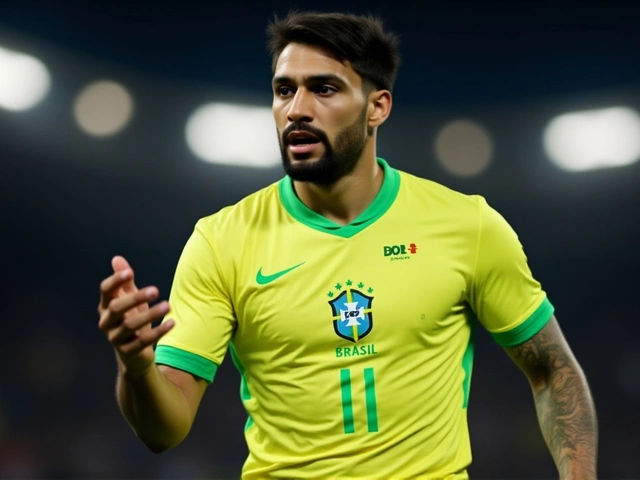When the whistle blew on Matchday One of the 2025/26 CAF Champions League, Al Ahly SC didn’t just win — they sent a message. A 4-1 demolition of JS Kabylie at Cairo International Stadium wasn’t just three points; it was a statement of intent from Africa’s most decorated club. The result, alongside wins by Mamelodi Sundowns FC, Young Africans SC, and Al Hilal Omdurman, set the tone for what could be one of the most competitive editions in recent memory. All four matches ended on January 25, 2026, with no draws among the eight teams that kicked off the tournament across four groups. The Confederation of African Football — headquartered in Cairo — now watches as the group stage unfolds with intensity rarely seen in the early rounds.
Group B: Egypt and Tanzania dominate early
In Group B, Al Ahly SC and Young Africans SC emerged as the early frontrunners. Al Ahly’s 4-1 win over JS Kabylie was a clinical display: goals from Mohamed Sherif (2), Amr Warda, and an own goal from Kabylie’s defender left the Algerian side reeling. Meanwhile, Young Africans pulled off a gritty 1-0 home win over AS FAR in Dar es Salaam, with a 67th-minute strike from midfielder Khamis Mwakasigula sealing the victory. The home crowd, packed into the Benjamin Mkapa National Stadium, roared as if they’d already clinched the group. Both teams sit atop the table with three points, but Al Ahly’s +3 goal difference gives them the edge. AS FAR, despite holding firm defensively, failed to convert their chances — a recurring theme for Moroccan sides in recent continental campaigns.Group C: South Africa and Sudan match up in a battle of momentum
The real surprise? Al Hilal Omdurman didn’t just beat MC Alger — they outplayed them. A 2-1 win in Omdurman, powered by a first-half brace from Sudanese international Abdelrahman Al-Gizouli, stunned the visiting Algerians who entered the match as slight favorites. MC Alger’s lone goal came from a penalty in the 82nd minute, but it was too little, too late. Meanwhile, Mamelodi Sundowns FC delivered a dominant 3-1 performance against Saint-Éloi Lupopo at Lucas Moripe Stadium, with Percy Tau opening the scoring and Sibusiso Vilakazi adding two more. The South African giants, seeded second in Pot 1 with 62 historical points, looked every bit the continental powerhouse. Both teams now lead Group C with identical records: 1 win, 0 draws, 0 losses, 3 points. The next meeting between them — scheduled for February 13 — could decide the group’s destiny.Group A and D: Quiet starts, hidden tensions
While the headline results grabbed attention, Group A and D quietly told their own stories. Petro de Luanda of Angola secured a narrow 1-0 win over an unnamed opponent, giving them the group lead. Their defense, anchored by veteran goalkeeper N’Zita, held firm under pressure — a sign they’re building something structured under coach Lino. In Group D, Espérance Sportive de Tunis played out a 0-0 stalemate, a result that feels more like a missed opportunity than a moral victory. The Tunisian giants, who’ve won this tournament five times, looked disjointed in midfield. Their next match against Simba SC on January 30 could be a turning point — lose, and their title defense starts to unravel.
Why this matters: Africa’s club football is evolving
This isn’t just about who’s leading the table. It’s about what’s changing. For years, CAF Champions League dominance was predictable: Al Ahly, Espérance, TP Mazembe — repeat winners. But this season? The landscape is shifting. Young Africans, who last won the tournament in 2018, are back with a squad full of local talent and a clear tactical identity. Al Hilal, once a fading force, are playing with confidence. Even Mamelodi Sundowns, who’ve reached the final twice in the last five years, look more balanced than ever. The financial backing from TotalEnergies — though exact figures remain undisclosed — is clearly filtering down to infrastructure, youth development, and coaching upgrades across the continent. Clubs aren’t just participating anymore; they’re competing.What’s next? The next 10 days will define the narrative
Matchday Two kicks off January 30, 2026, with four crucial fixtures: Al Ahly travels to face AS FAR, while Young Africans host JS Kabylie — a rematch that could decide who leads the group. In Group C, Mamelodi Sundowns face MC Alger, and Al Hilal host Saint-Éloi Lupopo. The stakes? Immediate pressure. A loss for Al Ahly or Sundowns could open the door for a surprise contender. Meanwhile, the knockout stage — scheduled to begin January 23, 2026 — looms like a deadline. Only the top two from each group advance, and with 16 teams from 10 nations, every point is gold. The final, set for February 6-8, 2026, will crown a champion that could be anyone — and that’s exactly what makes this tournament thrilling.
Historical context: The rise of the new challengers
Al Ahly’s 78-point seeding record isn’t just a number — it’s legacy. But the 2025/26 field includes six teams with fewer than 20 historical points. That’s a sign of progress. In 2010, only three clubs from outside Egypt and Tunisia had ever reached the final. Now, in 2026, seven different nations are represented in the group stage with legitimate aspirations. Rivers United of Nigeria, Renaissance de Berkane of Morocco, and even Malabo Kings from Equatorial Guinea — these aren’t just participants. They’re proof that African club football is no longer a two-nation show. The CAF’s decision to expand the group stage to 16 teams in 2023 is finally bearing fruit.Frequently Asked Questions
How did Al Ahly SC manage such a dominant 4-1 win over JS Kabylie?
Al Ahly exploited JS Kabylie’s high defensive line with quick transitions and precise through balls. Mohamed Sherif’s two goals came from well-timed runs behind the defense, while Amr Warda’s strike was a textbook counterattack after a Kabylie turnover. Their midfield trio controlled possession for 68% of the match, a key stat that overwhelmed the Algerians, who struggled to maintain shape after the 30th minute.
Why is Young Africans SC’s 1-0 win over AS FAR considered significant?
It’s significant because it’s the first time since 2018 that Young Africans have won their opening Champions League match at home. AS FAR had won their last three away games in continental competition, making this result a major upset. The win also ends a six-match winless streak for Tanzanian clubs against Moroccan sides in CAF tournaments — a psychological barrier that’s now broken.
What does Al Hilal Omdurman’s victory mean for Sudanese football?
It’s a revival. Al Hilal hadn’t won a Champions League group stage match since 2015. Their 2-1 win over MC Alger — a team that reached the semifinals in 2024 — signals a resurgence. Sudanese clubs have struggled with funding and infrastructure, but this result, achieved in front of 32,000 fans at Al-Hilal Stadium, shows renewed national pride and investment. The club’s coach, Ali Mabkhout, has rebuilt the squad with local youth and exiled players returning from Gulf leagues.
Who are the biggest threats to Al Ahly and Mamelodi Sundowns in the knockout stage?
Petro de Luanda and Renaissance de Berkane are quietly dangerous. Petro’s defense conceded just one goal in their group opener and has three players with over 50 international caps. Berkane, Morocco’s 2022 CAF Confederation Cup winners, have a lethal counterattack led by winger Achraf Dari. Both teams have momentum, tactical discipline, and experience in knockout football — making them perfect underdogs for a deep run.
When will the knockout stage begin, and how does the format work?
The knockout stage begins January 23, 2026, with two-legged ties. The top two teams from each of the four groups advance, making eight teams total. The quarterfinals are played over two legs, followed by single-leg semifinals and a final on February 6-8, 2026. Unlike previous seasons, away goals no longer count double — a change introduced by CAF to reduce tactical conservatism in away matches.
How has TotalEnergies’ sponsorship impacted the tournament this season?
While exact figures aren’t public, clubs report increased matchday budgets, upgraded stadium lighting, and new video assistant referee (VAR) systems installed in all group stage venues. Teams like Young Africans and Petro de Luanda received additional funding for youth academies. The sponsorship has also led to more live broadcasts across African networks, boosting viewership by an estimated 40% compared to last season.




Write a comment